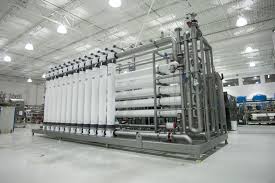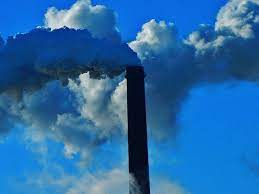Meaning of Ultrafiltration and Basic Principles and Processes of Ultrafiltration
Ultrafiltration (UF) is a variety of membrane filtration in which hydrostatic pressure forces a liquid against a semi permeable membrane. Suspended solids and solutes of high molecular are retained, while water and low molecular weight solutes pass through the membrane.
This separation process is used in industry and research for purifying and concentrating macromolecular (103 – 106 Da) solutions, especially protein solutions.
Ultrafiltration is not fundamentally different from microfiltration, Nano-filtration or gas separation, except in terms of the size of the molecules it retains.
Ultrafiltration is applied in cross- flow or dead-end mode and separation in ultrafiltration undergoes polarization. It is equally used in an advanced treatment of waste-water to get high quality end products like water that can be reused or recovered.
Many of the Crystal Quest water coolers use the ultrafiltration water purification process. Ultrafiltration (UF) is an important purification technology used for the production of high-purity water in the biochemical, food and beverage, and biopharmaceutical industries.
When strategically combined with other purification technologies in a complete water system, UF is ideal for the removal of colloids, proteins, bacteria, pyrogens, and other organic molecules.
Read Also: Industrial Wastewater Treatment Procedure
Meaning of Ultrafiltration
Ultrafiltration (UF) is a membrane-based separation process widely employed in various industries for the purification and concentration of liquids.
This technology is particularly valuable in water and wastewater treatment, as well as in sectors such as food and beverage, pharmaceuticals, and biotechnology. Here’s an expert explanation of ultrafiltration;
1. Membrane Technology: Ultrafiltration relies on semi-permeable membranes with specific pore sizes, typically in the range of 0.1 to 0.001 micrometers. These membranes act as barriers, allowing the passage of water and small solutes while blocking larger particles, colloids, and macromolecules.
2. Pore Size Selection: The selection of membranes with precise pore sizes is critical in ultrafiltration. The membrane’s pore size determines the molecular weight cutoff, defining the size of particles that can pass through. This allows for the targeted separation of components based on their molecular sizes.
3. Mechanism of Filtration: Ultrafiltration operates on the principle of pressure-driven filtration. When a pressure differential is applied across the membrane, water and solutes smaller than the membrane’s pore size permeate through, forming the filtrate or permeate. Larger particles are retained on the feed side as retentate.
4. Water Purification: In water treatment applications, ultrafiltration is highly effective in removing suspended solids, bacteria, viruses, and other microorganisms from water. It serves as a physical barrier, producing a high-quality filtrate that meets stringent water purity standards.
5. Concentration and Fractionation: Ultrafiltration is also utilized for concentrating substances in liquid solutions. By allowing the passage of water while retaining solutes, the process can be used to concentrate proteins, enzymes, and other valuable components in various industries.
6. Industrial Applications: In the food and beverage industry, ultrafiltration is employed for the clarification and concentration of fruit juices, dairy products, and the separation of proteins. In pharmaceuticals, it plays a crucial role in the purification of drugs and the removal of impurities.
7. Pre-treatment in Water Reuse: Ultrafiltration is often used as a pre-treatment step in water reclamation and reuse processes. It effectively removes contaminants before subsequent treatment stages, ensuring the production of high-quality reclaimed water.
8. Fouling and Cleaning: Fouling, the accumulation of particles on the membrane surface, is a challenge in ultrafiltration. Expertise in membrane cleaning techniques is essential to maintain efficiency and extend the life of the membranes. Chemical cleaning, backwashing, and periodic maintenance are commonly employed strategies.
9. System Design and Integration: Successful ultrafiltration systems require careful design considerations, including membrane module selection, operating conditions, and system integration. Expertise in system engineering ensures optimal performance and longevity of the ultrafiltration process.
In summary, ultrafiltration is a sophisticated membrane technology that plays a pivotal role in separating and purifying liquids in various industries. Its versatility, efficiency, and ability to selectively separate components based on size make it a valuable tool in the quest for high-quality water and purified products.
Read Also: Industrial Waste-water Treatment Trickle Filters
Basic Principles and Process of Ultra filtration Principles

Ultrafiltration is a pressure-driven purification process in which water and low molecular weight substances permeate a membrane while particles, colloids, and macromolecules are retained.
The primary removal mechanism is size exclusion, although the electrical charge and surface chemistry of the particles or membrane may affect the purification efficiency. Ultrafiltration pore ratings range from approximately 1,000 to 500,000 daltons, thereby making UF more permeable than Nano filtration (200 – 1.000 daltons).
UF membranes are composed of a polymer, such as polysulfone or polyamide that is usually extruded into flat sheets or hollow fibers or cut into disks as required by the specific application.
A small disk of UF membrane may be subject to rapid fouling and produce a low flow rate for many processes.
As a result, UF membranes are typically arranged in a configuration which maximizes surface area and reduces fouling by using a tangential flow design to reduce solute accumulation at the membrane surface.
Tangential flow UF devices may be spiral-wound cartridges containing several square feet of membrane wrapped onto a central core tube or hollow-fiber cartridges containing dozens of thin UF membrane fibers.


Process
Ultrafiltration systems eliminate the need for clarifiers and multimedia filters for waste streams to meet critical discharge criteria or to be further processed by waste-water recovery systems for water recovery.
Efficient ultrafiltration systems utilize membranes which can be submerged, back-flushable, air scoured, spiral wound UF/MF membrane that offers superior performance for the clarification of waste-water and process water.
Read Also: Farming and Care Guide of Broccoli



